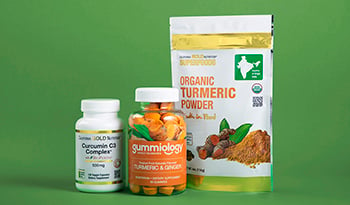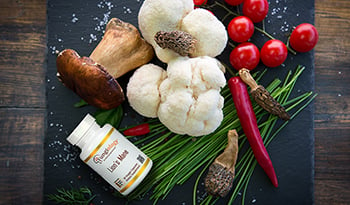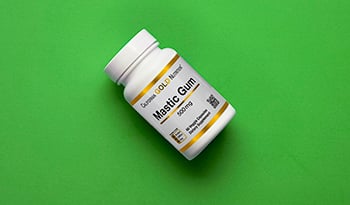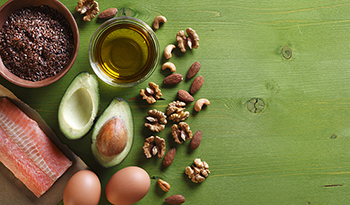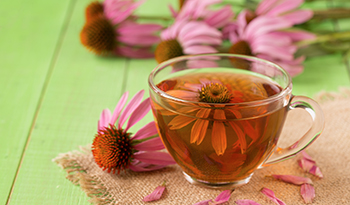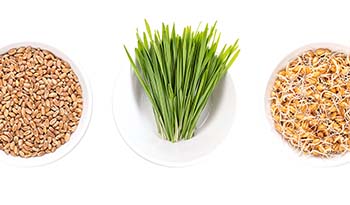Health Benefits of Arnica Montana

You’ve likely sought pain relief at some point in your life. However, it’s not always easy to alleviate the body aches and soreness that may afflict you. Compounding the problem of finding relief is the concern about the side effects of the most widely used over-the-counter and prescription pain medicines. There are some natural alternatives for managing pain, one of which is arnica. In fact, pain relief is just one of arnica’s many uses. Decreased bruising, reduced swelling and easing arthritis symptoms are just a few of its other purported benefits.
What Is Arnica?
Arnica comes from a perennial plant scientifically known as arnica montana. You may also find it called other names including wolf’s bane, leopard's bane, mountain daisy, mountain tobacco and mountain arnica. Found in the mountainous areas of Europe and North America, the plant produces yellow, daisy-like flowers.
Herbal vs. Homeopathic Use of Arnica
Historically, arnica was used as an herbal preparation. The first documented medicinal use of the fresh or dried flowers of arnica dates back to the 1500s. Compresses were created from the flowers to treat sprains and bruises. There are also generations of Swiss mountain-climbing guides who chewed arnica leaves to protect against climb-induced fatigue.
Now, however, the most common over-the-counter use and the only FDA-approved and regulated form is a homeopathic preparation of arnica montana. Homeopathic medicines are prepared from natural (e.g. plant, mineral and animal) substances, but are unique because they are significantly diluted such that many of them contain no molecules of the original substance.
According to homeopathic theory, like cures like—meaning a disease can be cured by a substance that produces symptoms similar to that of the disease. Homeopathic proponents also attest to the law of minimum dose, which holds that the lower the dose of a medicine, the more effective it will be. While skeptics suggest that homeopathic remedies exhibit only a placebo effect, given their negligible doses, homeopaths claim that they actually work in practice.
Health Benefits of Arnica
- Helps alleviate pain. Arnica is a popular holistic treatment for body pain caused by trauma, surgery or inflammation. A study on marathon runners showed that those who took arnica experienced a lower level of muscle soreness immediately after a run compared to those who took placebo pills. Other research has demonstrated that arnica is an effective alternative to NSAIDs (non-steroidal anti-inflammatory drugs) for post-traumatic and post-operative pain management.
- Decreases swelling. Arnica is well-known for its use in reducing edema, especially when it’s caused by sprain, muscle strain, insect bites or broken bones.
- Relieves osteoarthritis. Arnica appears to be helpful in managing common osteoarthritic symptoms such as pain and joint stiffness. Research has found that daily application of arnica gel was as effective as ibuprofen gel for pain relief and hand function.
- Promotes bruise healing. Arnica aids in speeding up the healing process for bruises. It is believed to stimulate the production of white blood cells which help to clear out congested blood and fluids from the affected area. Plastic surgeons have found it helpful for reducing bruising after cosmetic surgical procedures. Bruising not associated with physical trauma is not likely to respond to arnica. Such bruising should be evaluated by a healthcare professional as it can be caused by a wide variety of medical conditions.
- Relieves skin conditions. As an antioxidant, arnica can provide relief for those with conditions like acne, eczema and psoriasis. It’s also an effective moisturizing agent. While pure arnica montana extract should not be applied to the skin, arnica can be mixed with a carrier oil or cream to manage dry skin problems.
How to Use Arnica
While conventional medications may be taken indefinitely for the prevention of symptoms, this is not the case with homeopathic remedies. Homeopathics function according to a stimulus-response theory. Their action stimulates a healing response. So, by principle, just a few doses are necessary to initiate the body’s healing process. They should not be used on a prolonged basis without professional medical supervision.
Homeopathic arnica is available in topical and oral forms in several different potencies, ranging in increasing strength from 3X up to 30C. An “X” notation refers to a 10% dilution, while a “C” denotes a 1% dilution. Thus, 3X means that arnica has been diluted to 10% three times. 30C means the arnica has been diluted to 1% thirty times.
Generally, you may find that a mild bruise or injury can be managed well with a few applications of a low-potency topical form of arnica. Before applying it, you would be wise to test it on a small area of skin first to determine if there is any adverse reaction. For a moderate to severe injury, there may be better response to an oral form of arnica, though medical evaluation is also recommended at this point.
A couple of days of a lower strength oral arnica dose, 2 to 3 times per day, may be sufficient for a moderate injury. A more severe injury may be better managed with more frequent dosing with a higher strength oral form like 30X or 30C. Remember that serious injuries or chronic pains warrant consultation with a healthcare professional.
While arnica may be effective in relieving pain and reducing inflammation, it’s important to understand that it may not be able to actually treat the underlying cause of your symptoms. That is why it’s recommended to consult with a medical professional as well. Your healthcare provider can help diagnose the cause of your pain or swelling and then provide definitive treatment.
Precautions When Taking Arnica
The FDA considers pure arnica to be unsafe. In herbal form, arnica is usually applied topically because there can be significant adverse effects when taken orally. As already described, homeopathic forms of arnica are extremely diluted, so they are generally safe. However, it is still possible to experience side effects like tremors, weakness, dizziness, vomiting, liver damage, kidney damage, irregular heart rate and gastrointestinal irritation. If you have any uncertainty about whether you have an herbal or homeopathic preparation of arnica, consult with your doctor.
Arnica should not be applied to open wounds, broken skin, or mucous membranes unless otherwise advised by your doctor. Care should be taken when using topical arnica, as it is possible to develop a rash. Long-term use may irritate the skin, causing peeling, blisters or eczema.
Pregnant or breastfeeding women should avoid oral arnica and check with a doctor before using a topical form. Advice from your healthcare professional is also wise if you have digestion problems or high blood pressure. There may be an interaction with other drugs like steroids, pain medication, and blood thinners as well.
DISCLAIMER:This Wellness Hub does not intend to provide diagnosis...













































































 Table of Contents
Table of Contents



